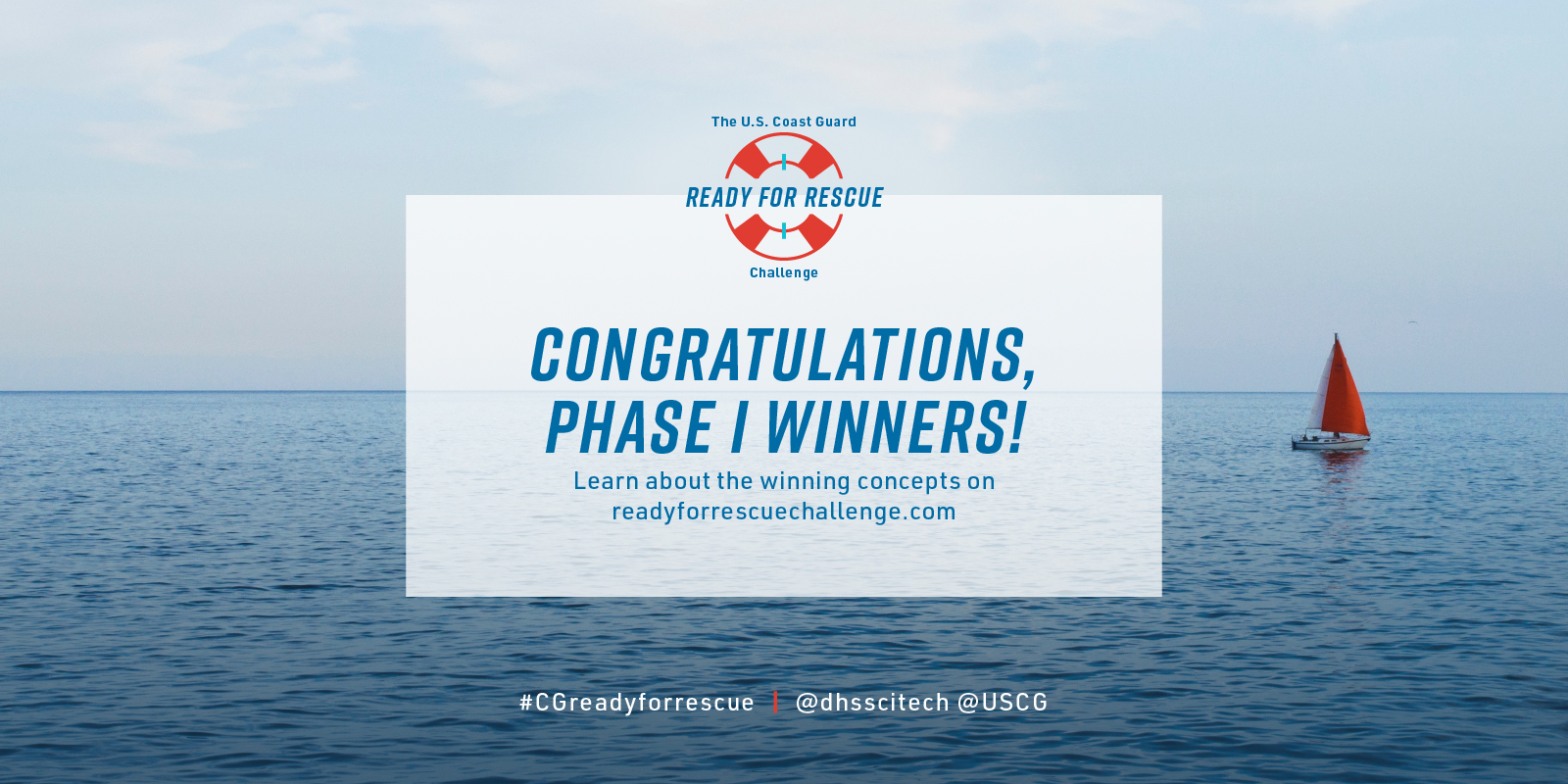Phase I Winners Announced in Coast Guard Challenge to Develop New Boater Safety Solutions
Winners were announced this week for Phase I of the U.S. Coast Guard Ready for Rescue Challenge. Issued by the U.S. Department of Homeland Security Science and Technology Directorate (DHS S&T), in collaboration with the U.S. Coast Guard Research and Development Center (RDC), the $255,000 prize competition called for boater safety solutions that will help make it easier to find people in the water. Winners include five monetary prize winners, who will share the $25,000 Phase I prize purse, and 16 non-monetary honorable mention award winners.
According to the USCG press release, the winning teams share "bold visions of boater safety solutions that have the potential to improve the chances of a successful rescue." The Challenge received submissions harnessing technologies such as smart watches, LED lights, thermal heating devices, and fluorescent gels, as well as re-designed consumer products such as phone cases.
This year’s five monetary prize winners are:
- A "Detection Kite" Zipper Pull (Bay Sea Scouts Inc. of Bay Village, Ohio): An aluminum-coated kite that reflects Coast Guard radar and can be seen above waves from five to seven miles away. It clips onto a lifejacket in a pouch and can also help retain body heat if used as a head covering.
- AdventureSafe 911 Platform and the RaftUp App (RaftUp Technologies Inc. of North Little Rock, Arkansas): A free mobile app that allows a person in distress to share exact GPS coordinates with the Coast Guard via its SMART SOS feature. The app integrates with public safety software AdventureSafe which enables the Coast Guard to track first responders.
- Personal Deployment Beacon (Fusion Tactical of Chino Hills, California): A white LED light, attached to a self-inflating helium balloon, that strobes above waves and reflects on the water's surface. The balloon is attached to a lifejacket in a pouch, or directly to the arm as a sleeve, and releases and inflates with only one pull.
- Personal Flotation Devices equipped with Infrared and Radar Beacons (Pallas LLC of Washington, D.C.): A $1 lifejacket patch equipped with a long-range radio-frequency ID tag for easy detection by search radars. The patch material glows brightly so search and rescue helicopters with infrared sensors can detect a person during the day and at night.
- Safety Beans Tracking and Rescue System (Nautical Beans Inc. of Seattle, Washington): A radio system comprised of a base station and up to 32 trackable waterproof watches (called “Safety Beans”) and attachable tags (called "Safety Buds"). The system works without a GPS, and can track the Safety Beans and Safety Buds up to five miles from the base station and when submerged in water.
The 32-person judging panel, with expertise in design, search and rescue, marine safety, boating industry manufacturing and recreational boating, evaluated the submissions and recommended five monetary prize winners and the honorable mention award winners. Each monetary prize winner will receive $5,000. All winners are invited to participate in Phase II of the competition and pitch their solution in a “Piranha Pool” to compete for a total prize pool of $120,000.
The Phase II $120,000 prize pool will assist Phase II winners in developing their concept into a working prototype. In Phase III, the Coast Guard will field test prototypes alongside standard USCG-approved safety equipment. At the conclusion of Phase III, the judging panel may award a total of $110,000 in additional monetary prizes.
For more information about the U.S. Coast Guard Ready for Rescue Challenge, visit readyforrescuechallenge.com.





